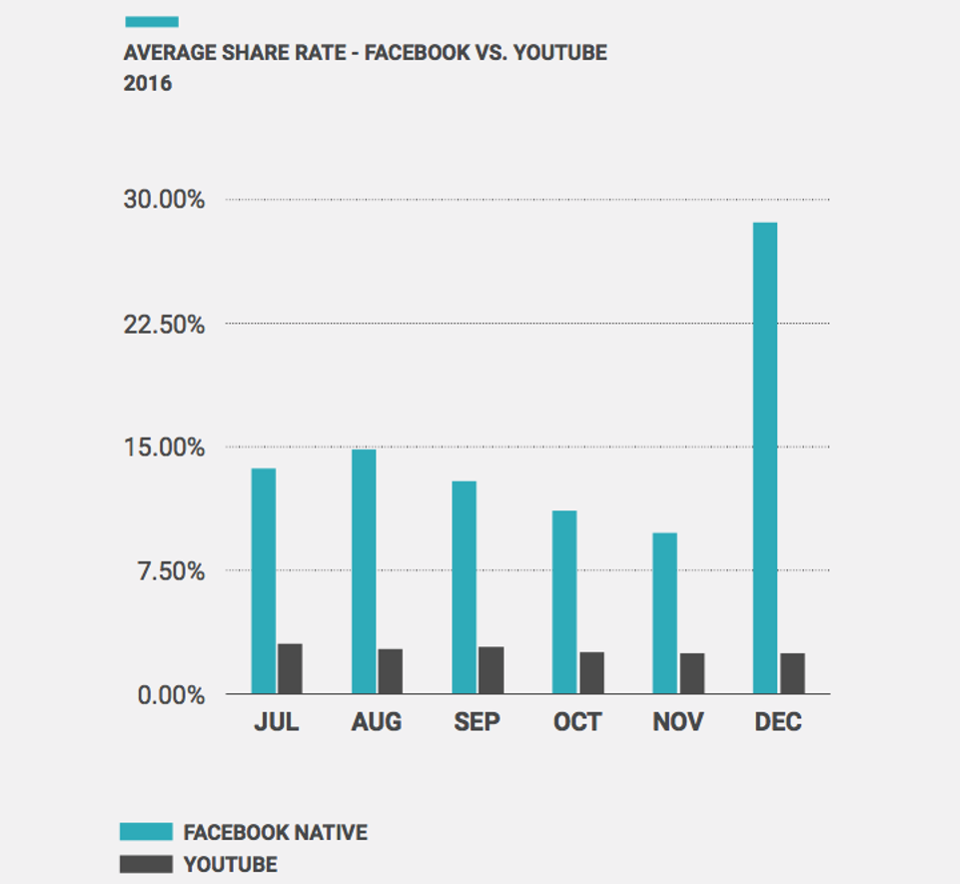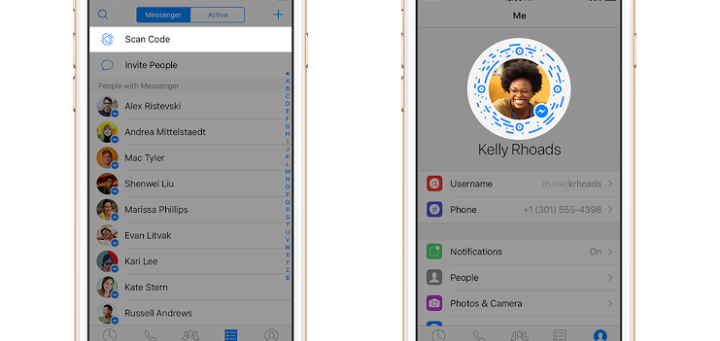Which name should you get behind for your video marketing strategy? Here’s some info to help you decide.

Why Facebook?
According to a recent study done by Quintly, which analyzed 6.2 million posts across 167,000 Facebook profiles over the last 6 months of 2016, “Facebook native videos performed better [than YouTube] in average interactions and shares, averaging 110% more interactions and 478% more shares.” In December, it spiked to an even greater variance vs. YouTube, by a massive 1055%.
This data shows how Facebook clearly prioritizes native video displayed on its own platform, vs. YouTube videos shared to it. Native videos automatically begin playing when scrolled upon, while YouTube content must be loaded and played within an external web page that is essentially embedded within the Facebook feed. This leads to a much more seamless and simple user experience which further increases the likelihood of that content being liked, commented upon, or shared.

Native videos include Facebook Live content, which has the unique ability of connecting businesses directly with their audiences by discussing topics, giving tours, or providing demos, guidance or support in real-time.
As 2017 continues, Facebook is following in YouTube’s footsteps by allowing Creators to publish branded or sponsored content on behalf of advertisers, and also by allowing select Creators to receive a similar 55% revenue share of any ads placed on their video content. It’s also been reported that Facebook is currently developing an app for a set-top box to promote long-form original video content, and become “video-first” to compete with advertising dollars traditionally reserved for television.
As you can see, there are many current opportunities to work with Facebook video, and a ton of additional opportunities and ways to monetize content down the pipeline. The biggest draw for now, obviously, is the massive potential videos have to perform and be interacted with on the platform.
Why YouTube?
While video content on Facebook can be distributed simply through the newsfeed and social sharing by and to potentially non-engaged audiences, YouTube is an entirely different beast. YouTube fans are borderline cult-ish, subscribing to and following their favorite Creators like the super-engaged users they are.
The monetization capabilities through YouTube are also unique. Assuming you follow YouTube’s terms and conditions for creating original, non-copyrighted content, you can submit your video to be approved for monetization, after which YouTube will place ads inside or near your videos. The amount your videos earn depends on the types of ads and the price of those ads placed.
YouTube also enlists a system called Content ID to help copyright owners identify and manage their content on the platform.
Videos uploaded to YouTube are scanned against a database of files that have been submitted to us by content owners. Copyright owners get to decide what happens when content in a video on YouTube matches a work they own. When this happens, the video gets a Content ID claim.
Copyright owners can choose different actions to take on material that matches theirs:
- Block a whole video from being viewed
- Monetise the video by running ads against it; in some cases sharing revenue with the uploader
- Track the video’s viewership statistics
YouTube only grants Content ID to copyright owners who meet specific criteria. To be approved, they must own exclusive rights to a substantial body of original material that is frequently uploaded by the YouTube user community. YouTube also sets explicit guidelines on how to use Content ID, and they monitor Content ID use and disputes on an ongoing basis to ensure these guidelines are followed.
In connection with Content ID, UGC (user-generated content) is an additional way that YouTube can help expose content belonging to one user across many user’s channels. For example, if one YouTuber uses a song belonging to another YouTube musician in their video, the Content ID system will match this reference file (the song that was uploaded by the original musician) and can place a claim on that video to monetize all future ad revenue earned. There are a number of campaigns you can use to take advantage of UGC of your original content.
All of these opportunities for monetization, in addition to the massive following of die-hard YouTube fans looking for their newest subscription, make YouTube an ideal place to start a video marketing strategy (while also earnings some extra advertising dollars as well!)
—
In a study done by Cisco, it’s been estimated that by 2020, 75% of mobile traffic will be generated by video content. The same study also estimates 7 trillion video clips will be uploaded in 2020 – which is 2.5 daily video clips for every person. Video is currently en route to have the highest growth rate out of any mobile application in the next 5 years, which is why we cannot stress enough how important it is to nail down a video marketing strategy ASAP.
To find out more about content marketing trends taking over in 2017, including predictions for the future of video, download a copy of the latest State of Inbound Report from HubSpot:


